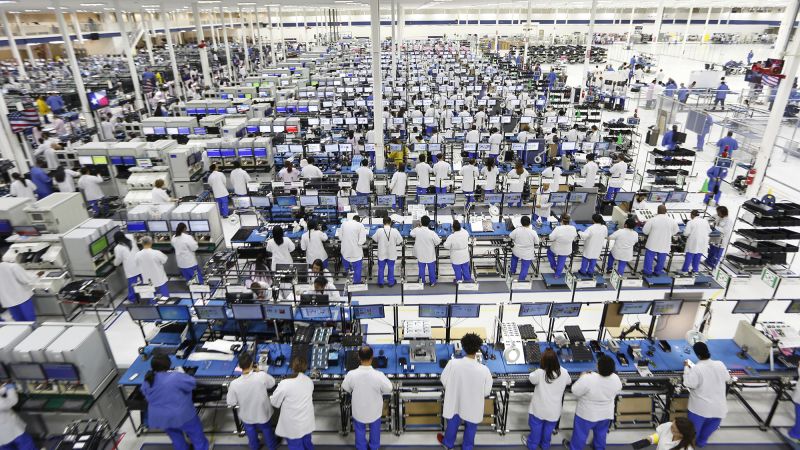
In 2013, Motorola launched an ambitious initiative to manufacture its Moto X smartphone in the United States, hoping to capture a market largely dominated by Apple and Samsung. The strategy was to appeal to consumers who favored domestically produced goods. Dennis Woodside, former CEO of Motorola and current CEO of Freshworks, noted that some customers expressed a preference for products made in the United States. However, this effort was short-lived, with the Texas factory closing by 2014 due to insufficient sales and high production costs.
Woodside’s experience highlights the challenges companies face in relocating smartphone production to the United States. While lower labor costs and proximity to suppliers are significant factors, the lack of skilled labor and the difficulty in attracting and retaining factory workers make domestic assembly daunting. As the conversation around manufacturing in the U.S. resurges—especially with President Donald Trump urging tech giants like Apple and Samsung to shift production stateside—Woodside’s insights are increasingly relevant.
The Moto X Experience
Motorola’s decision to produce the Moto X in Fort Worth was a strategic move aimed at providing customization options not available with competitors’ devices. Consumers could personalize features such as color and design via Motorola’s website. Despite this innovative approach, the company sourced many components from Asia, leading to logistical complexities. According to Strategy Analytics, only 500,000 units sold during the third quarter of 2013, prompting Motorola to abandon the domestic assembly plan by May 2014.
“The costs were definitely higher, which posed challenges,” Woodside remarked. He pointed out that the fragmented supply chain further complicated the situation. Motorola’s attempt remains one of the few large-scale efforts to manufacture smartphones in America, overshadowed by smaller companies like Purism, which produces its Liberty phone domestically but lacks Motorola’s scale.
The Workforce Challenge
A significant hurdle for Motorola was the recruitment and retention of skilled workers. With alternative job opportunities in sectors like retail and food service, attracting talent proved difficult. Additionally, the complexity of the manufacturing process, likened by Woodside to assembling a “super tiny Lego set,” required specialized training.
“There are several hundred parts, and they’re tiny,” he explained, underscoring the necessity of skill development for potential employees. The U.S. manufacturing sector has struggled with a skills shortage, losing an estimated 11,000 jobs between June and July 2023, as reported by the U.S. Bureau of Labor Statistics. This trend continues to pose challenges, with many Americans preferring careers outside manufacturing.
The disparity is stark when compared to countries like China, where manufacturing jobs are abundant. In 2023, approximately 123 million individuals were employed in China’s manufacturing sector, according to the country’s fifth economic census. Apple has also diversified its manufacturing footprint, moving some production to India and Vietnam to reduce reliance on China.
Woodside advised companies considering U.S.-based smartphone manufacturing to reevaluate their workforce strategies. “Understanding the nature of the product you’re making and whether you will need to train the workforce extensively is crucial,” he noted. As the demand for new skills, such as coding and data analytics, grows alongside automation, companies must adapt their training and hiring practices.
Ultimately, the challenges faced by Motorola in 2013 serve as a cautionary tale for today’s tech companies looking to manufacture domestically. The interplay between labor availability, production costs, and supply chain logistics will continue to shape the landscape of smartphone manufacturing in the United States.






